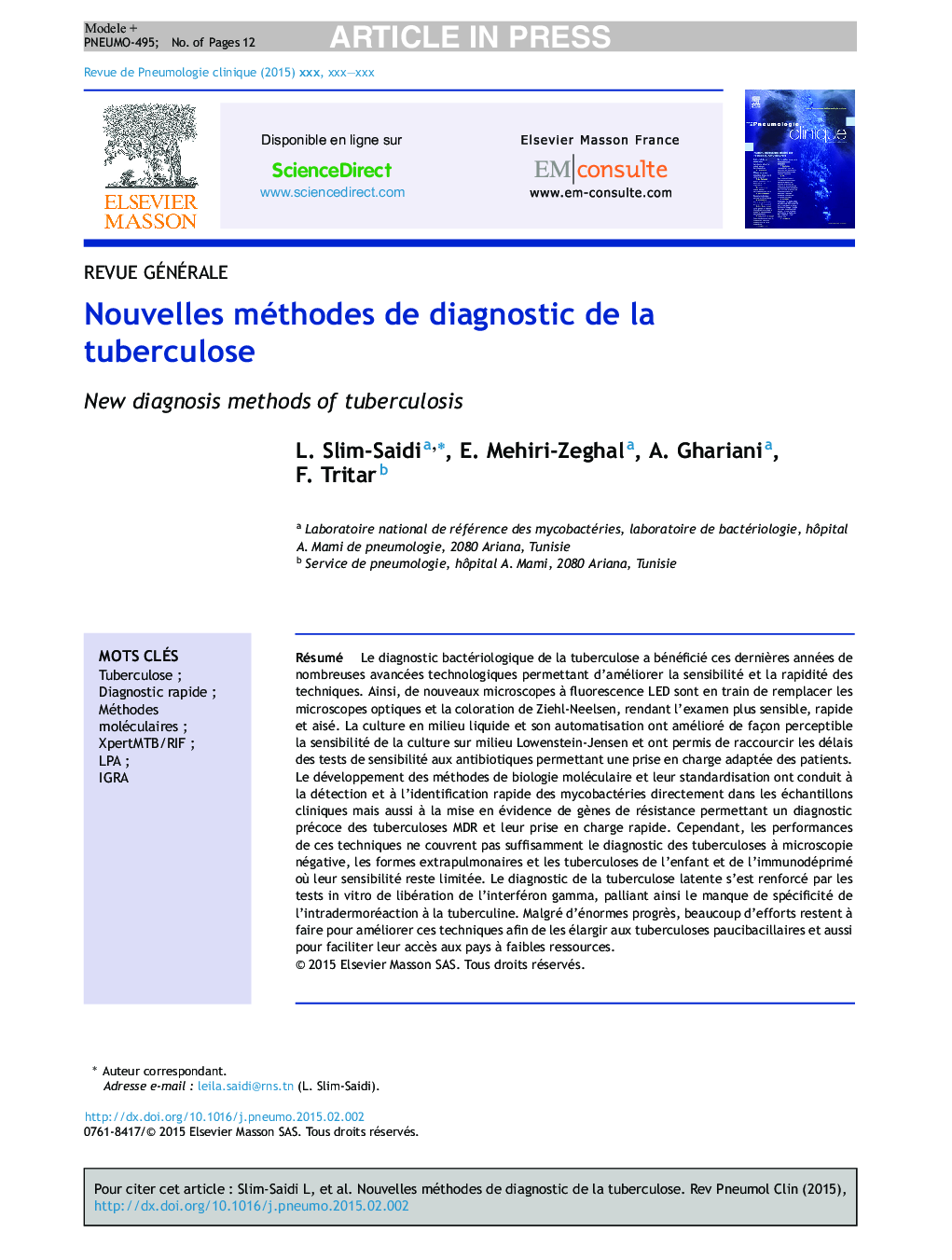| Article ID | Journal | Published Year | Pages | File Type |
|---|---|---|---|---|
| 3419414 | Revue de Pneumologie Clinique | 2015 | 12 Pages |
Abstract
Bacteriological diagnosis of tuberculosis has benefited in recent years from many technological advances to improve rapidity and sensitivity of the techniques. Thus, new LED fluorescence microscopes are in the process of replacing the optical microscopes and the Ziehl-Neelsen technique, making the examination more precise, faster and easier. The manual and automatic liquid culture has improved Lowenstein-Jensen culture and helped shorten antibiotic sensitivity test, allowing appropriate management of patients. The development and standardization of molecular biology methods led to the rapid detection and identification of mycobacterium directly in clinical samples but also of resistance genes for early diagnosis of MDR-TB and dealing with them quickly. However, the performance of these techniques does not sufficiently cover the diagnosis of smear-negative tuberculosis, extrapulmonary forms, children- and immune-compromised tuberculosis where sensitivity is limited. The diagnosis of latent tuberculosis is reinforced by the in vitro release testing of gamma interferon overcoming the lack of specificity of the tuberculin skin test. Despite considerable progress, more amelioration is still needed to improve these techniques in order to extend them to the paucibacillary tuberculosis and to facilitate their access to low-resource countries.
Keywords
Related Topics
Health Sciences
Medicine and Dentistry
Infectious Diseases
Authors
L. Slim-Saidi, E. Mehiri-Zeghal, A. Ghariani, F. Tritar,
